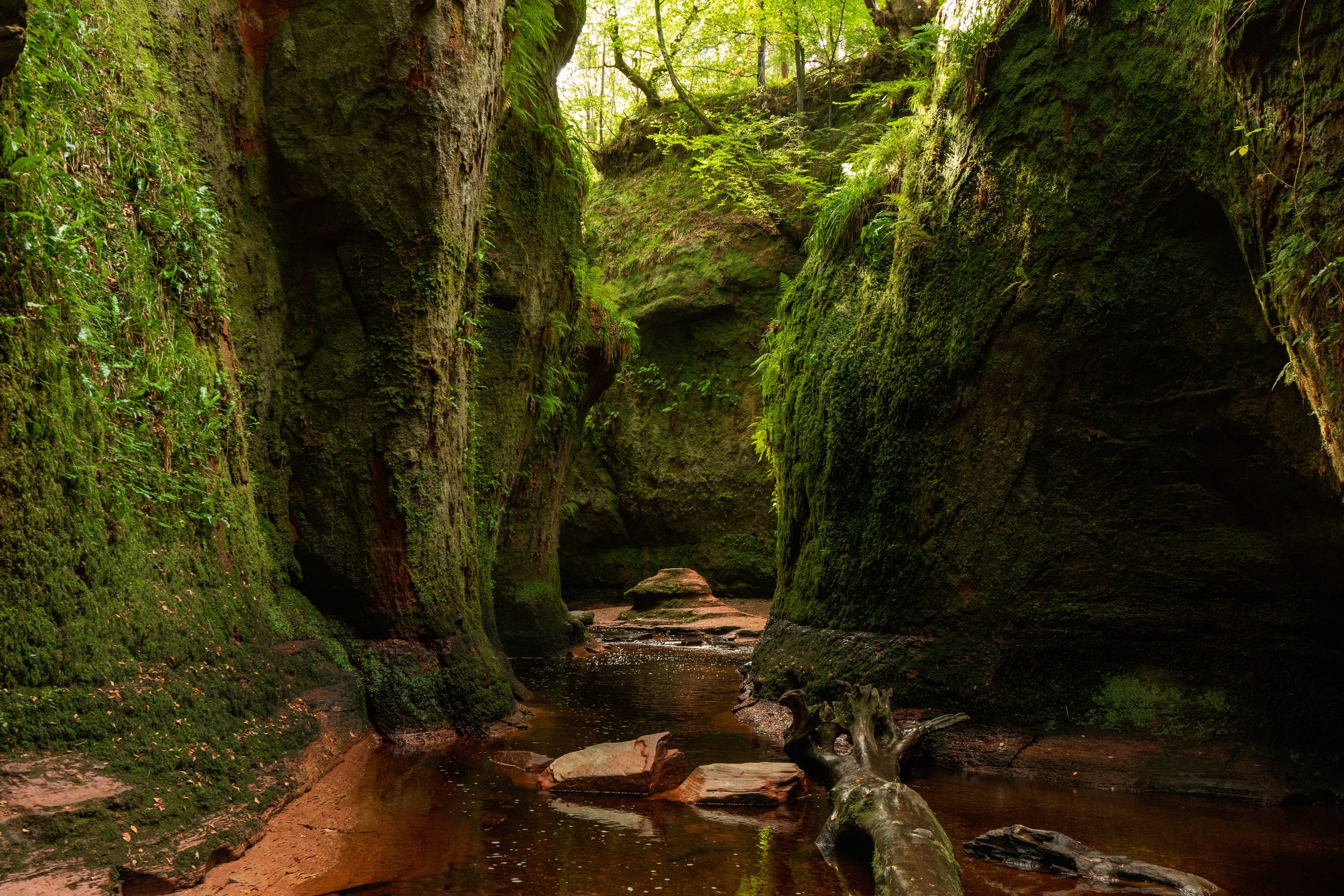Smoo Cave
The Smoo Cave is a spectacular sea cave carved into the limestone cliffs near Durness, in the very north of the Scottish mainland. It is unique among the natural landmarks of Scotland for a number of reasons.
The name smoo comes from the Old Norse smuga meaning hiding place, which is probably exactly what this cave was during Viking times. In fact, local archaeological findings suggest that this cave was occupied much earlier than that.
Smoo Cave is located at the mouth of a tidal gorge and consists of a large opening leading into further smaller chambers. The entrance is 40m wide and 15m tall - the largest sea cave entrance in Britain.
What makes Smoo Cave quite special is the fact that it’s actually two caves, merged into one, but formed by different mechanisms. The main outer chamber is formed by the action of the sea, whereas the inner chambers have been carved by freshwater from the surface. In the second chamber, the Alt Smoo stream drops into a sinkhole and onto a rock face below, creating a beautiful waterfall. Smooth!
Smoo Cave is free to visit all year round, any time of day. But one can only walk as far as the second chamber, by following a wooden walkway to a viewing platform from where you can see the waterfall. A guided tour can take you a little bit further into a third chamber, at a cost of £6 per person - this has to be done by boat. Those guided tours run April to September, without advance booking, because they’re not always possible. If it’s rained too much, the water levels would be too high to allow safe passage into the third chamber. A guided tour is also a great way to learn more about the cave. That said, a self-guided tour can also suffice - by the time you’ve reached the second chamber, you’ve already seen the most impressive parts and most of what there is to see.
The cave is just just a mile east of Durness, and free parking is available right off the main road (A838). Note that spaces can be quite limited during the summer season, given that Smoo Cave has become one of the most popular stops on the North Coast 500.





Explore the main settlement on Isle of Barra